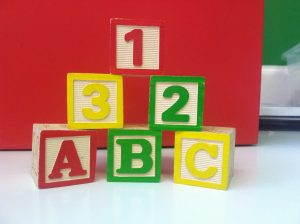
Growing Up Rhyming
Most children grow up having memorized a collection of simple songs and nursery rhymes. Many of these rhymes contain funny or silly words, such as “Little Miss Muffet” or just about any rhyme by Dr. Seuss. Some tell interesting and strange stories, like “There Was an Old Woman Who Lived in a Shoe” or “Jack and Jill.” They’re easy to memorize and fun to say. But little did we know these quirky rhymes were actually helping us learn more about our language and explore new topics!
The Importance of Rhyme
As children grow and develop, they learn how to speak the English language by listening to their parents and others around them. But when it comes to concepts such as learning rhythm, word sounds, and simple logic, there’s nothing better for kids ages 0–5 than a good old nursery rhyme. Story rhymes also help kids grow their imagination. Imagination is an important part of a child’s play, and play is the main way children 0–5 learn about the world around them.
Letter Rhyming
Alphabet rhymes are a great way to start kids on the path to being a good reader and writer. Letters are the foundational part of both these skills, and even young children can learn their ABCs through simple rhymes. Take, for example, the “ABC Song.” Not only are the letters of the alphabet arranged in such a way that they rhyme at the end of each line, but they’re also set to a catchy tune that makes the whole thing easy to remember. By singing this song with their kids, parents can help children memorize their letters even before they begin school. Once they are equipped with these building blocks, they can begin to put the letters together as they learn to read and write. And since children learned their letters as part of a rhyme, they can begin to anticipate which letters are used to form the sounds they need to complete rhymes.
Rhyme Time
Incorporating letter rhymes is easier than you might think, even for working parents whose kids are in someone else’s care most of the day. You can utilize 10–20 minute periods of time to teach or review the rhymes. For example, sing the “ABC Song” while playing with foam letters at bath time, or while your child arranges letter-shaped refrigerator magnets during times in the kitchen. At bedtime, read a short letter rhyme book such as Chicka Chicka Boom Boom (by Bill Martin Jr. and John Archambault) before tucking in your child. You can also take a few minutes to dance to letter rhyming songs found on YouTube or other websites: